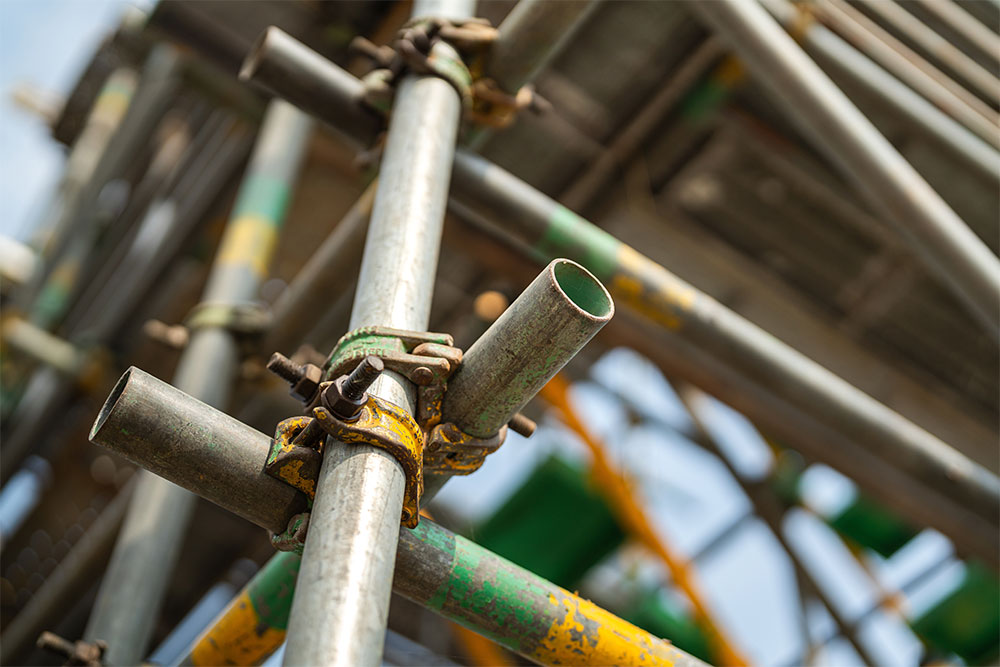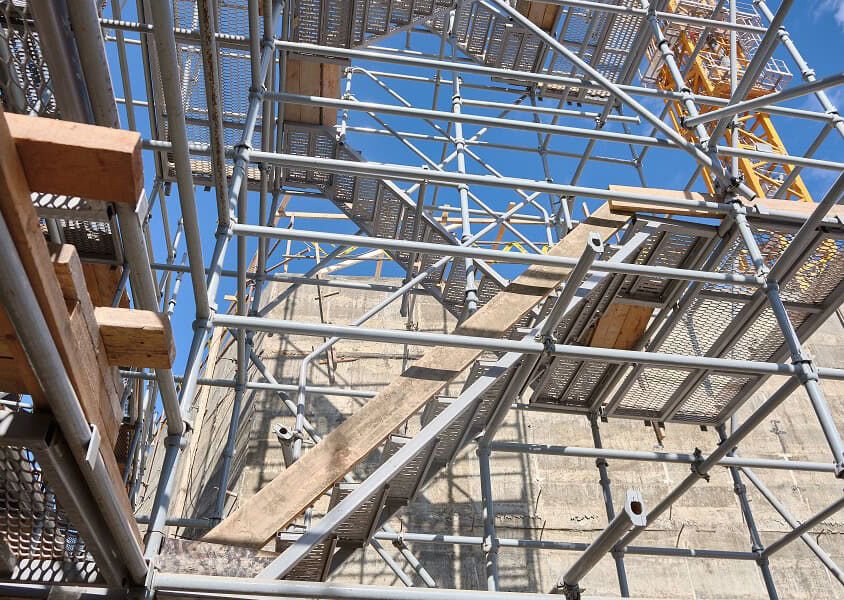Temporary Roof Scaffolding for Your Construction or Renovation Project
Temporary Roof Scaffolding for Your Construction or Renovation Project
Blog Article
Checking Out the Different Sorts Of Scaffolding Used in Building And Construction Projects
The building industry counts greatly on numerous kinds of scaffolding to meet particular task requirements, each offering unique benefits and applications. Standard structure scaffolding supplies a strong structure for general tasks, while suspended scaffolding is crucial for deal with skyscraper frameworks. Various other options, such as system and rolling scaffolding, cater to performance and flexibility, respectively. Furthermore, the cantilever variant proves important in urban atmospheres where room is constricted. Recognizing the nuances of these scaffolding types is vital for optimizing safety and security and efficiency on construction websites, triggering a closer exam of their distinct features and applications.

Typical Structure Scaffolding
Typical frame scaffolding is one of the most widely used approaches in the building and construction sector because of its effectiveness and versatility. This system is composed of horizontal and vertical frames that are put together to develop a secure system for workers and products. The major parts consist of upright posts, horizontal journals, and angled dental braces, which together give a strong framework that can sustain considerable tons.
One of the crucial advantages of typical framework scaffolding is its flexibility to different construction tasks, ranging from residential structures to large commercial frameworks. The modular layout permits easy assembly and disassembly, making it reliable for both long-lasting and temporary projects. In addition, the system can be customized in elevation and size, fitting different structure designs and site problems.
Security is paramount in scaffolding applications, and standard structure systems are geared up with guardrails and toe boards to protect against drops and guarantee employee defense. In addition, regular examinations and adherence to safety policies are crucial in preserving the stability of the scaffold. In general, standard frame scaffolding stays a basic selection in the construction industry, offering a dependable platform for labor and improving total project efficiency

Suspended Scaffolding
Put on hold scaffolding uses a special option for building projects that require access to raised surfaces, specifically in scenarios where standard framework scaffolding might be unwise. This type of scaffolding is generally suspended from the roof covering or upper levels of a structure, making use of a system of ropes, sheaves, and systems to produce a functioning room that can be adapted to various elevations.
One of the key advantages of put on hold scaffolding is its versatility. It can be conveniently repositioned or decreased to accommodate modifications in building needs, making it ideal for jobs such as window installation, frontage job, and maintenance on skyscrapers. Additionally, the marginal footprint of suspended scaffolding allows for much better usage of ground space in urban settings, where space is often restricted.
Safety is a vital factor to consider in the use of suspended scaffolding. In general, put on hold scaffolding supplies a efficient and effective solution for accessing hard-to-reach areas in different building situations, enhancing both performance and safety on website.
System Scaffolding
System scaffolding, typically considered as a modern-day solution in the scaffolding sector, contains pre-engineered elements that can be rapidly put together and adapted for various building tasks. Scaffolding. This kind of scaffolding is identified by its modular layout, More hints which permits for convenience and performance on work sites, accommodating architectural needs and different elevations
Typically made from high-strength steel or light weight aluminum, system scaffolding supplies improved toughness and stability. The components consist of upright messages, horizontal journals, and diagonal dental braces, which adjoin securely, making certain a robust framework. The layout commonly integrates standardized installations, simplifying setting up and disassembly processes, therefore minimizing labor time and costs.

Rolling Scaffolding
Rolling scaffolding is a versatile alternative to standard set scaffolding, made for flexibility and ease of usage on building sites. This type of scaffolding consists of a platform supported by structures with wheels, permitting employees to conveniently relocate it as needed. The flexibility attribute substantially boosts performance, as it lessens downtime connected with assembling and taking apart taken care of scaffolding.
Commonly built from lightweight products such as light weight aluminum or steel, rolling scaffolding provides a durable yet portable option for projects requiring constant repositioning - Scaffolding. official source It is specifically beneficial in tasks such as paint, drywall setup, and electrical work, where accessibility to various elevations and areas is needed
Security is paramount in rolling scaffolding design, with attributes such as locking wheels to avoid unplanned motion when being used, and guardrails to secure workers from falls. In addition, lots of models are adjustable in elevation, fitting numerous project requirements.
Cantilever Scaffolding

The design of cantilever scaffolding typically involves making use of arms or brackets secured to a structure or structure, enabling the platform to expand exterior securely. Safety is extremely important; hence, these scaffolds have to be crafted to stand up to ecological problems and various tons. Normal inspection and maintenance are necessary to guarantee architectural honesty and worker security.
Cantilever scaffolding is favored for its convenience and effective use of room, making it a preferred option in urban settings where space restraints prevail. It promotes much easier accessibility to high elevations, ultimately contributing to the total effectiveness of building and construction projects. Similar to all scaffolding types, correct training and adherence to safety criteria are essential for employees utilizing cantilever scaffolding.
Final Thought
Standard structure scaffolding gives stability, while suspended scaffolding provides flexibility for elevated tasks. System scaffolding assists in fast setting up, and rolling scaffolding improves wheelchair for varying job atmospheres.
Standard framework scaffolding supplies a durable foundation for general tasks, while suspended scaffolding is necessary for work on high-rise frameworks.Moving scaffolding is a flexible choice to typical fixed scaffolding, developed for mobility and ease of use on building sites. As with all scaffolding kinds, correct training and adherence to safety requirements are vital for workers utilizing cantilever scaffolding.
Typical frame scaffolding provides stability, More Bonuses while put on hold scaffolding provides versatility for raised jobs. System scaffolding helps with fast setting up, and rolling scaffolding improves flexibility for differing work settings.
Report this page